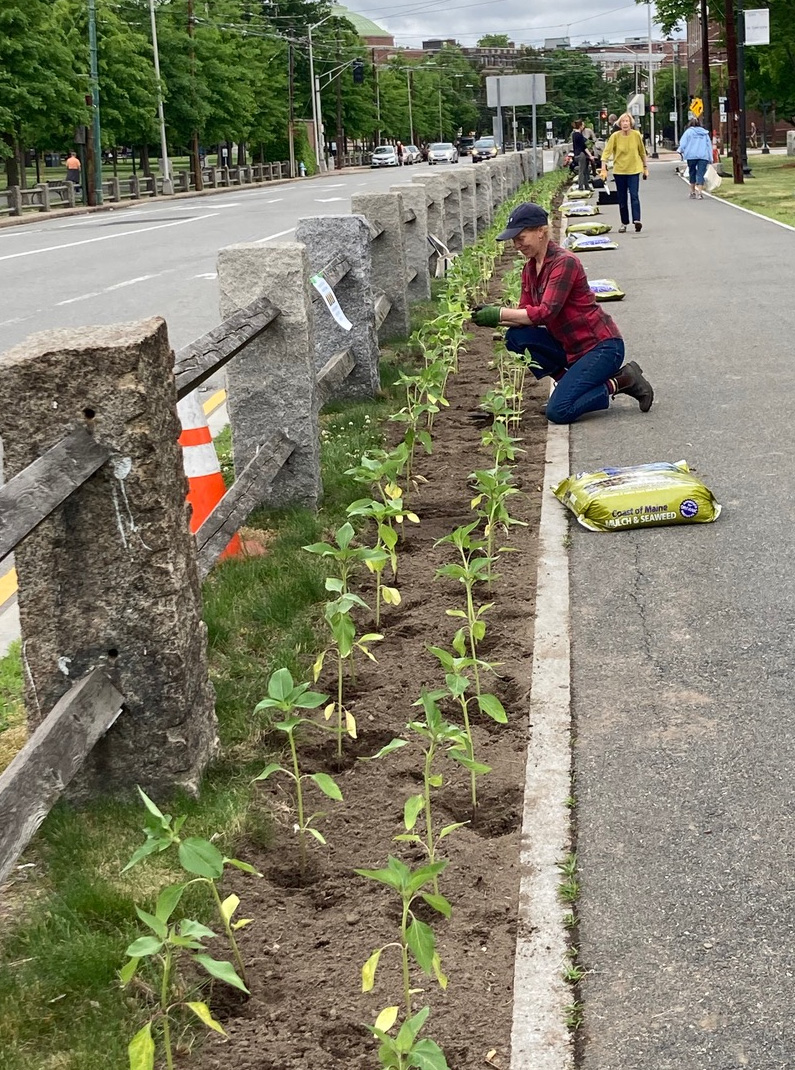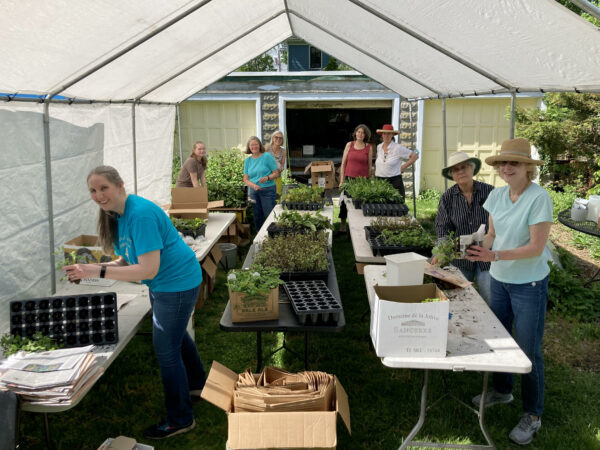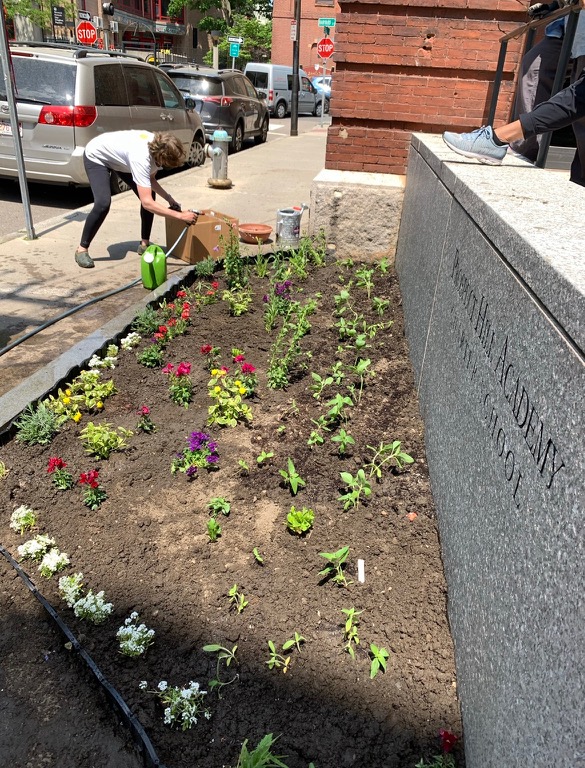From early efforts to preserve native plants; to advocacy for hazardous waste disposal days; and protecting our cooling tree canopy, members of CP&GC have strived to be good environmental stewards.
CP&GC Honors Ekua Holmes: GCA Commendation for Civic Improvement

CP&GC past-President Robin Powell Mandjes presents Boston-based mixed-media artist and children’s book illustrator, Ekua Holmes with a Garden Club of America Commendation for Civic Improvement.
CP&GC has been greatly enriched by its association with Ekua Holmes, a Boston-based mixed-media artist and children’s book illustrator. This spring, CP&GC was pleased to be able to honor Ms. Holmes with a Garden Club of America Commendation for Civic Improvement.
Ms. Holmes initiated the community-wide The Roxbury Sunflower Project in 2018, that has brought nature, beauty, and color to Boston’s Roxbury where community members were invited to plant 20,000 sunflowers. This project inspired others—a 2021 community planting at the Museum of Fine Arts, Boston and our club’s “Sunflower Project” with Prospect Hill Academy Charter School (PHA). Ms. Holmes generously collaborated with us at PHA, a Cambridge charter school that innovatively educates children from primarily underserved communities.
Recent CP&GC past-President Robin Powell Mandjes first suggested a club partnership with Ms. Holmes, a long-time friend and collaborator. We were “sheltering” due to COVID restrictions and no longer meeting in person. These extraordinary times encouraged CP&GC to consider what we could do to more directly contribute to the greater Cambridge community and we believed that making a connection with young people was the best way in which to contribute
Our members, as well as the PHA students, were recipients of Ekua’s creativity and generosity as she collaborated with us in producing six Zoom sessions related to art, science, math, and literacy. We are grateful for and honor Ms. Holmes’ leadership, collaboration, and friendship.
 Cambridge Plant & Garden Club Hosted Three Projects to Support Native Plants
Cambridge Plant & Garden Club Hosted Three Projects to Support Native Plants
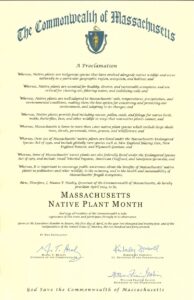 Governor Maura Healey officially proclaimed April Native Plant Month!
Governor Maura Healey officially proclaimed April Native Plant Month!
While all plants protect our planet’s air, water, and soil, native plants do all this and more. Native plants have evolved with native bees, birds, and other wildlife; this complex relationship is extremely specialized and cannot be substituted with exotic or non-native plants. Native plants include large canopy trees, understory trees, shrubs, perennials, vines or grasses that are indigenous to an area with a unique growing habitat.
North American native species are at risk of extinction because they cannot get nutrition from non-native plants. Habitat loss, climate change, and pesticide use in addition to competition from non-natives, are contributing to the steep decline of insects, caterpillars, birds, and many other species.
The Cambridge Plant & Garden Club hosted three projects to support natives and has partnered with many regional organizations like Grow Native Massachusetts.
More information on native plants, resources, and the events that were held.
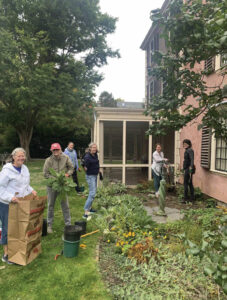
Renovating the Garden at the Hooper-Lee-Nichols House
Photo at left: October 13, 2022 (CP&GC workers mobilizing in the perennial beds) Photograph by Liz Adams.
Have you noticed anything different about the gar den at the Hooper-Lee-Nichols House this fall? The Cambridge Plant & Garden Club, which has maintained the garden for decades, is making changes.
The Hooper-Lee-Nichols House was left to the Cambridge Historical Society in 1957 after the deaths of the last private owner, Frances Emerson, and her husband. After settling into the house, the Society reached out to the then separate Cambridge Garden Club (founded 1938) and Cambridge Plant Club (founded 1889) about the care of the grounds. The Garden Club, which was considering a project to celebrate its upcoming 25th anniversary, accepted the invitation as a major project.
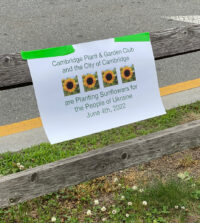 Planting Seeds of Peace and Beauty for Ukraine
Planting Seeds of Peace and Beauty for Ukraine
In late February, Cantabrigians watched in horror as the Russians invaded Ukraine, but what can ordinary people do beyond sending donations to humanitarian organizations and writing to political leaders? A letter to the editor of the New York Times [March 10, 2022], suggested a visible statement: “Plant seeds of peace and beauty.” Specifically, plant sunflowers – millions of sunflowers in flower beds, front lawns, municipal spaces, and parks as a reminder of what is at stake.
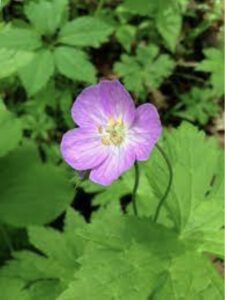 CP&GC Encourages Native Plant Population Growth in Cambridge
CP&GC Encourages Native Plant Population Growth in Cambridge
During the 2021-22 club year, the CP&GC’s Conservation Committee focused on the role that native plants can play in the city landscape. Once established, native plants provide food for birds, butterflies and insects. And more: they require less maintenance; they reduce carbon, heat, and noise; and they obviate the need for chemical pesticides. The question was how to spread this knowledge beyond plant enthusiasts already onboard.
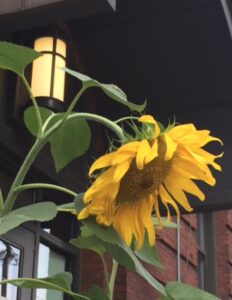 CP&GC Partners with Roxbury Sunflower Project and Prospect Hill Academy
CP&GC Partners with Roxbury Sunflower Project and Prospect Hill Academy
In 2020, with in-person activities and community outreach on hold due to the COVID lockdown, the Cambridge Plant & Garden Club (CP&GC) looked for novel ways to engage with the community and, specifically, with local students remotely, during the pandemic. The club’s hope was to inspire in students a closer connection with nature, public spaces, and knowledge of the plant world.
CP&GC members were inspired by Boston artist and community activist Ekua Holmes whose Roxbury Sunflower Project has planted hundreds of sunflowers in the historically Black neighborhood as symbols of hope, resilience, and empowerment. (In Spring 2021, Ms. Holmes expanded her sunflower planting with Elizabeth James-Perry, an Aquinnah Wampanoag artist, activist, and tribe member, on the grounds of Boston’s Museum of Fine Arts.) Together with Ms. Holmes, the club forged a partnership with the Prospect Hill Academy (PHA), one of the oldest and largest charter schools operating in Massachusetts. (PHA is a tuition-free, college preparatory school with a student body drawn from racially and socioeconomically diverse neighborhoods.)
Cambridge Community Gardens Today
2020-21 Cambridge Community Gardens Today, a publication of the Cambridge Plant & Garden Club, shines a light on each of 14 Cambridge Community Gardens operating today across the City. In addition to a brief introduction and conclusion, four pages are dedicated to each garden, including a short history, an overview of what is grown, a sketch of the gardeners, and how the garden is managed. Multiple photographs include a drone shot showing each garden in its neighborhood location.
The project’s committee is deeply indebted to Cambridge Community Garden coordinator Jennifer Letourneau for her support and enthusiasm. We are very grateful to the garden coordinators and gardeners who opened their gardens to us and shared their stories. However, the Cambridge Plant & Garden Club is fully responsible for the content of this publication: errors, observations and opinions are solely our own.
Click here to download a PDF of the book. To view the book below at fullscreen, just click the small square-shaped icon found in bottom right corner on the playback panel:

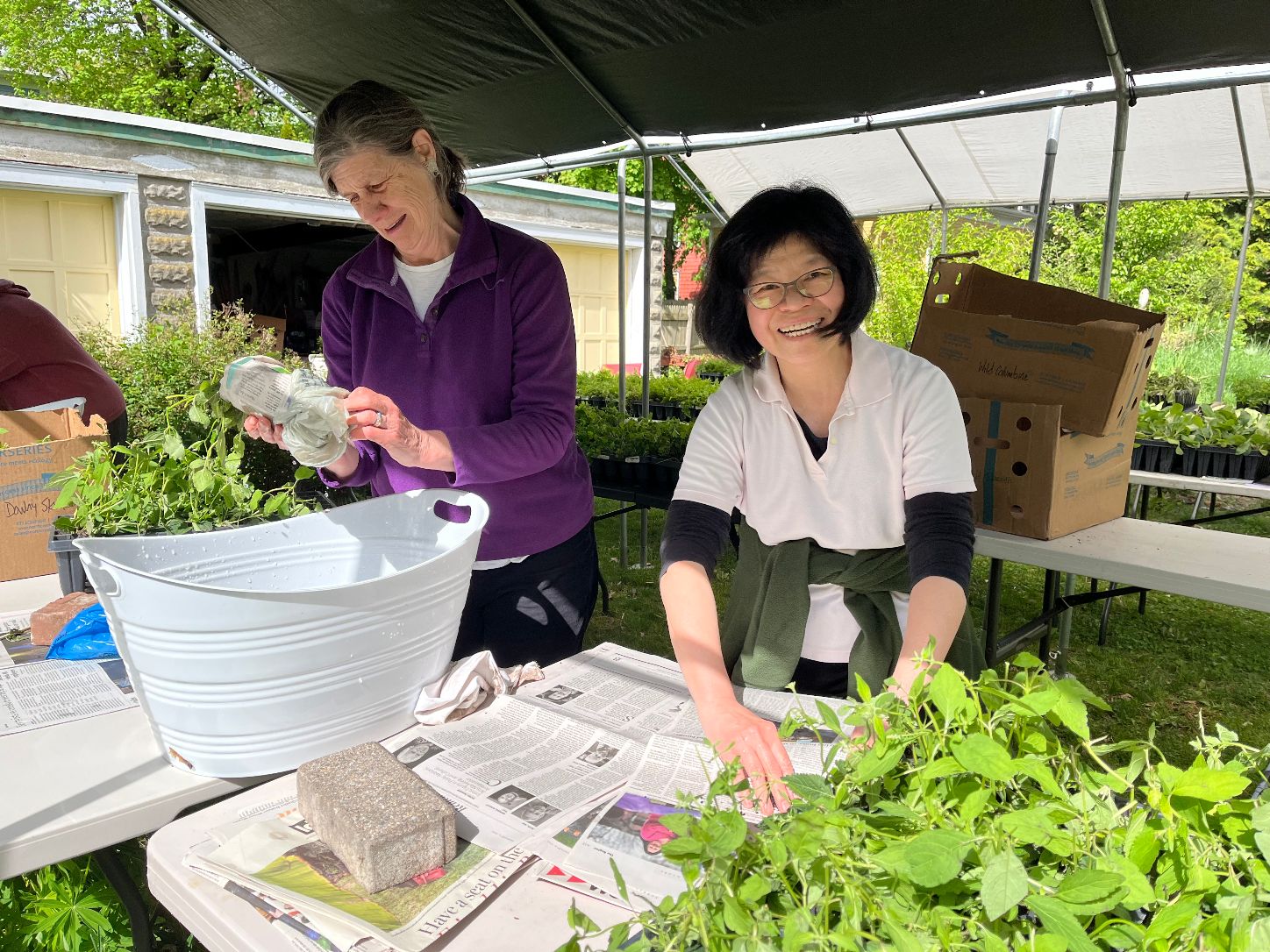

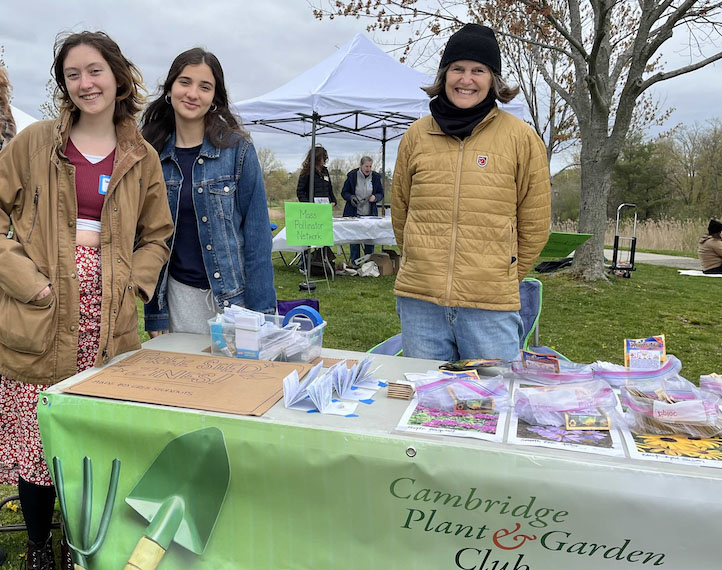
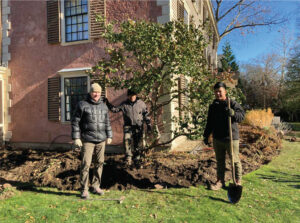
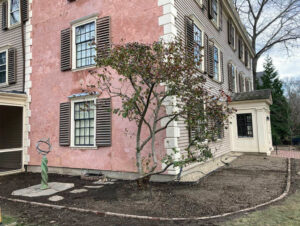
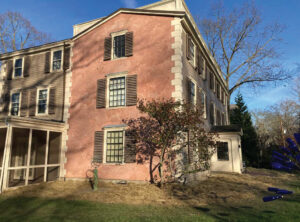
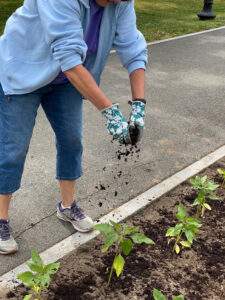 The sunflower is the Ukrainian national flower – a flower that the Cambridge Plant & Garden Club embraced through a partnership with the Roxbury Sunflower Project and Prospect Hill Academy that began as a pandemic project in 2020.
The sunflower is the Ukrainian national flower – a flower that the Cambridge Plant & Garden Club embraced through a partnership with the Roxbury Sunflower Project and Prospect Hill Academy that began as a pandemic project in 2020.
